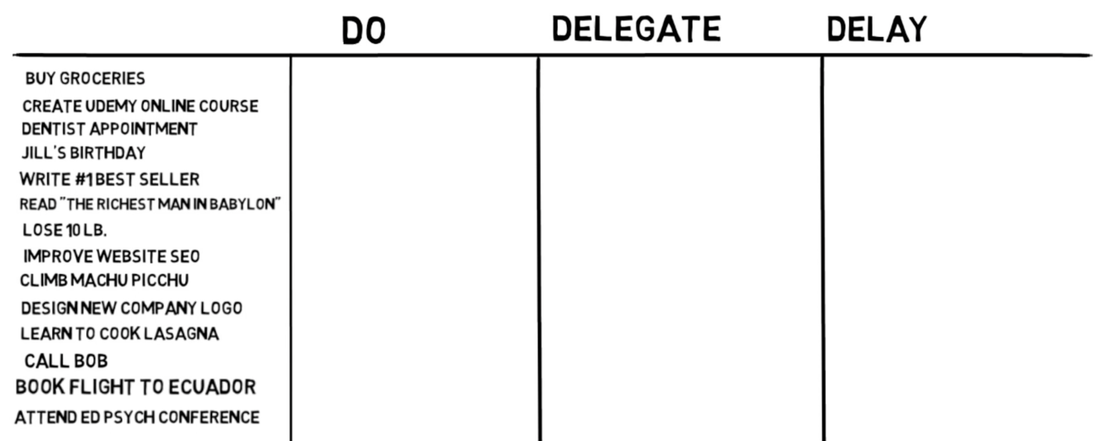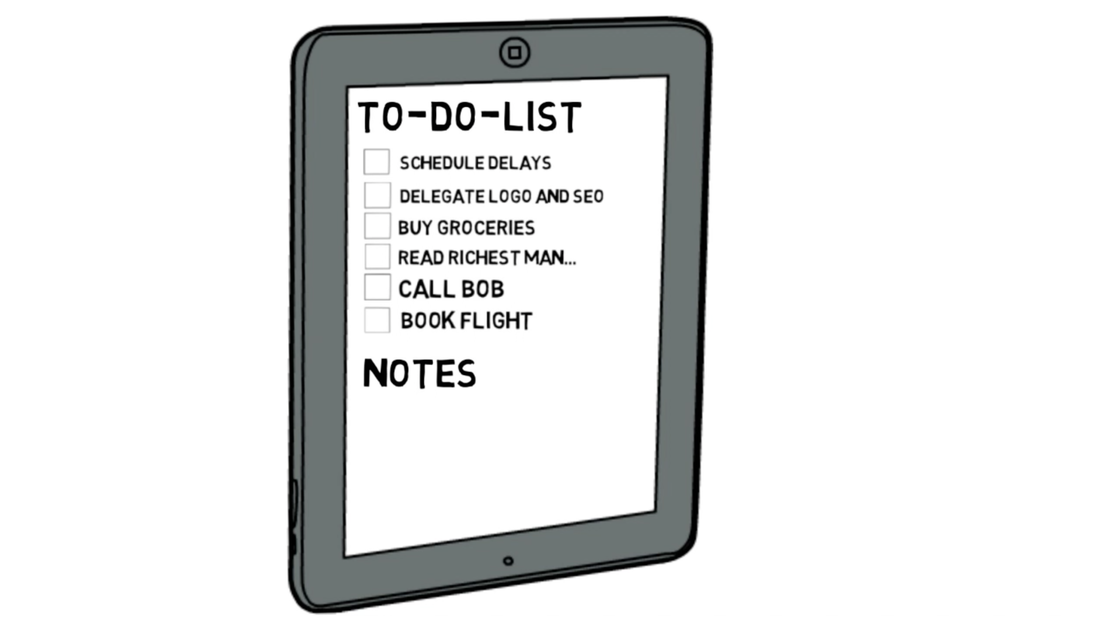|
To organize a to-do-list, one tool that you can use is the 4 D's. For every item on the list, you are either going to do it, delegate it, delay it, or dump it. While this might seem rather straight forward, there are few tricks to getting the most out of the method.
Create a Comprehensive List The first thing you want to do before organizing your to-do-list is to make sure you have a complete list. The list should include individual tasks, but can also include any projects or ideas you have floating around in your head. This process of creating an exhaustive list helps clear your mind, reducing cognitive fatigue. In fact, researchers E.J. Masicampo and Roy Baumeister discovered that similar to the Zeigarnik Effect, organizing your list actually helps free up cognitive resources, allowing you to be more productive and focused. After you have a comprehensive list, it is time to clean it up. To do this, create three columns with the labels "Do", "Delegate", and "Delay".
Delegate or Outsource
Now you want to go through and decide on any items you can delegate. This includes items you can outsource. In the digital world this includes cost effective solutions like upwork.com, fiverr.com and Amazon's mechanical turk. Do Once you have figured out the items you want to delegate, go back over the list and pick the items you believe are your high priority items that you want to accomplish within the next seven (7) days. If this is your first time using the process you will want to pick a start or end of your week, such as using Sunday or Monday. Delay Next you want to look for any items you can schedule to do later. Put those under the delay column. This may include recurring items, such as birthdays or filing taxes. It can also include items you wrote down that need to be structured, that need to be planned and broken down into smaller tasks. For example, you may want to publish a book or take a vacation. These are not tasks you normally accomplish in 7 days, requiring you schedule a time when you will assess the item and determine next steps. Dump or Archive At this point, the only items remaining on your list are those that did not fit under the first three columns. These are items that you need to dump. Before the digital age, to dump it meant to literally toss those items into the waste basket or if you felt you might want to save them for later you placed them in a manila folder in a metal filing cabinet. Today you can think of dumping it more as a digital dump with the option to either delete the item or you can archive your ideas electronically. Personally, I have an archive folder that is searchable. This allows you to retain your ideas or notes in a safe location while keeping your mind decluttered, allowing you to focus on your high priority items. Finalizing Your List With all items accounted for, the last step is to turn your to-do-list into a working document. Besides all of the "do" items you already listed, you want to add the task of scheduling any delays. This guarantees that over the next 7 days you will open up your calendar and set dates and times when the delays will turn into do items. Also, create a task to resolve those items you are going to delegate. In some cases it is a 5 minute phone call, but for some items you may want to actually schedule a meeting with whomever you will be putting in charge of the item.
Last, either below or off to the side of your to-do-list, keep some space available to take notes. This will allow you to quickly jot down any new ideas or tasks, allowing you to keep your mind decluttered throughout the week. Then, revisit the 4D process at the end of your week, cleaning up your notes by once again deciding to either do it, delegate it, delay it or dump it.
3 Comments
|
Authors
Richard Feenstra is an educational psychologist, with a focus on judgment and decision making.
(read more) 
Bobby Hoffman is the author of "Hack Your Motivation" and a professor of educational psychology at the University of Central Florida.
(read more) Archives
April 2023
Categories |


 RSS Feed
RSS Feed
